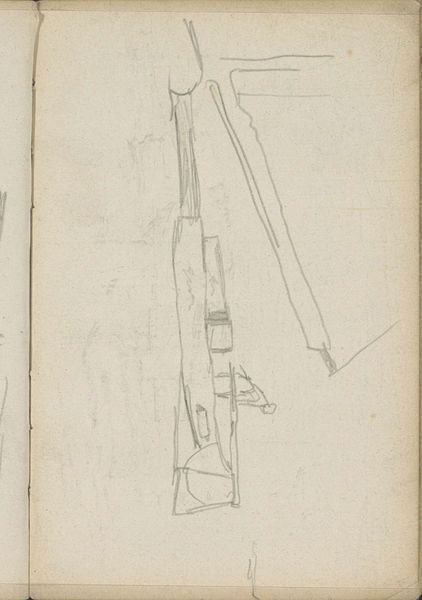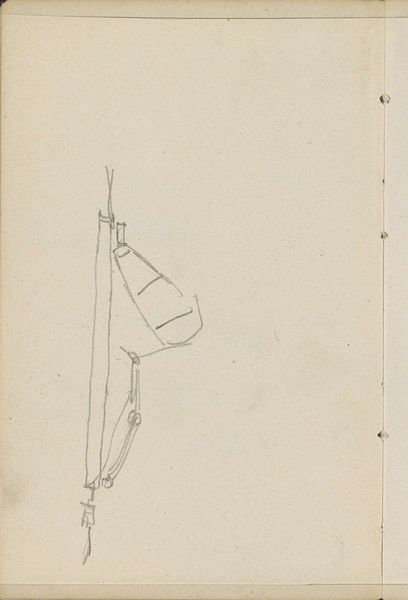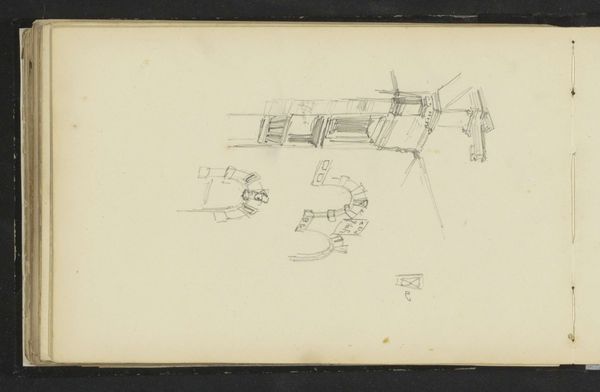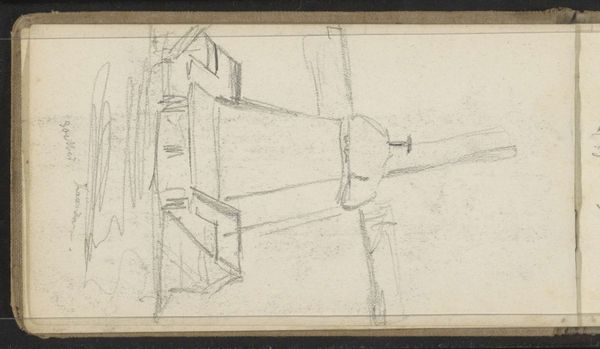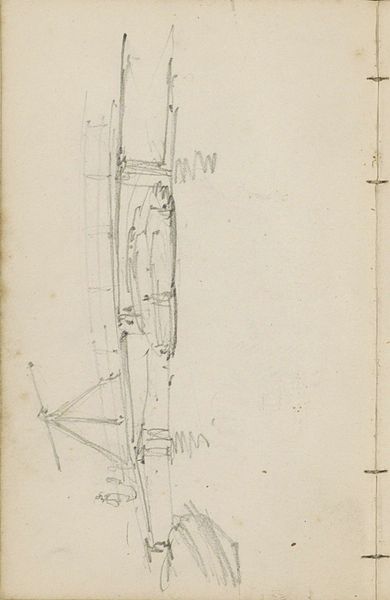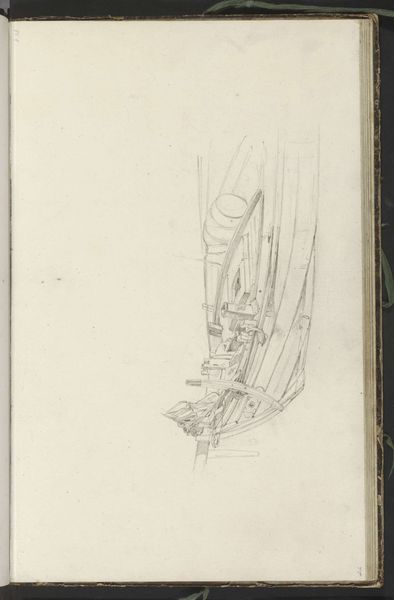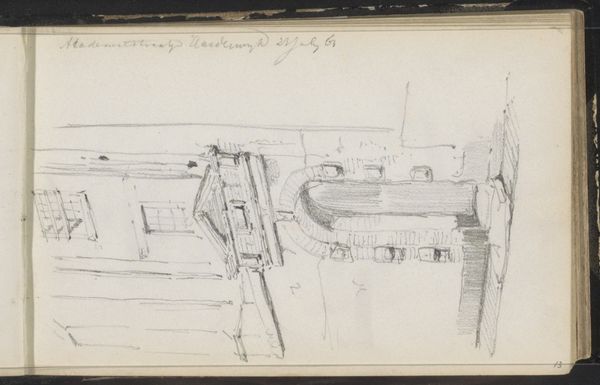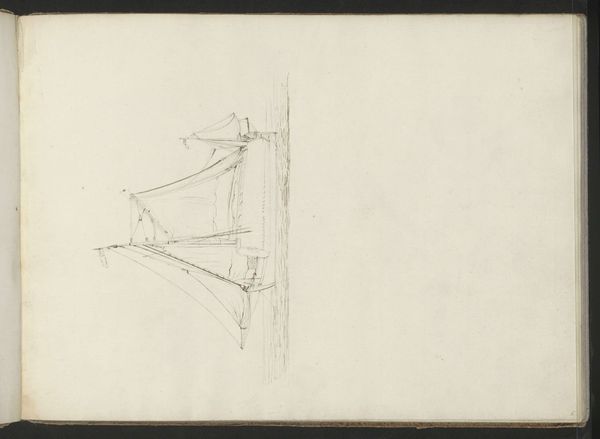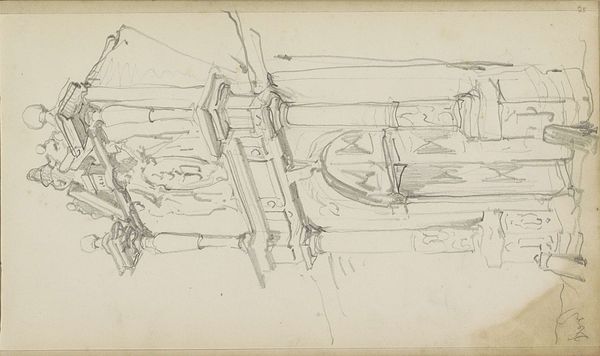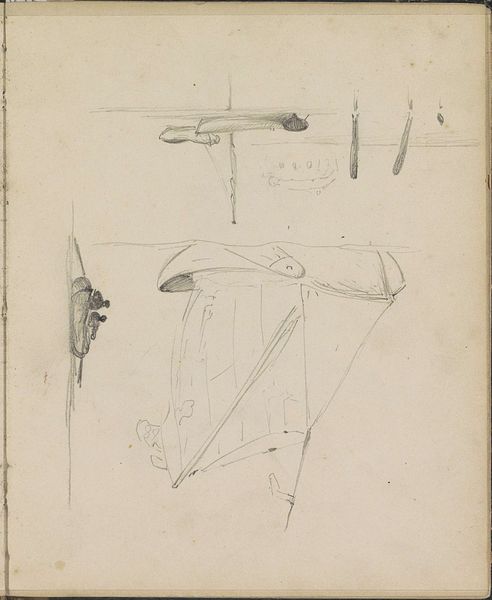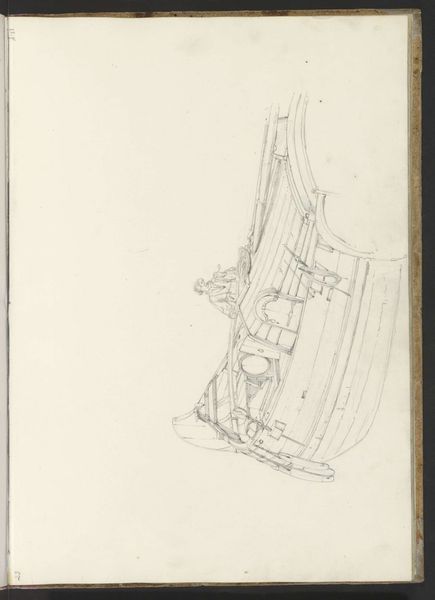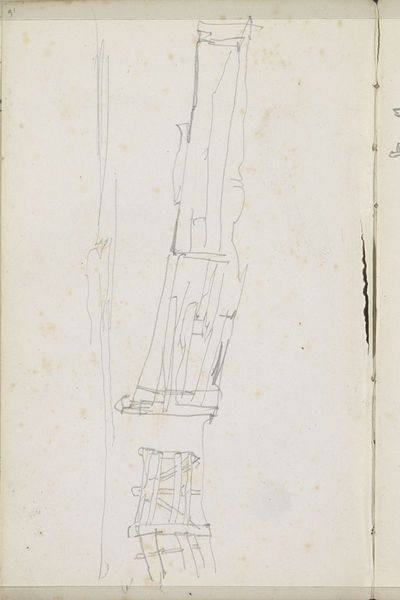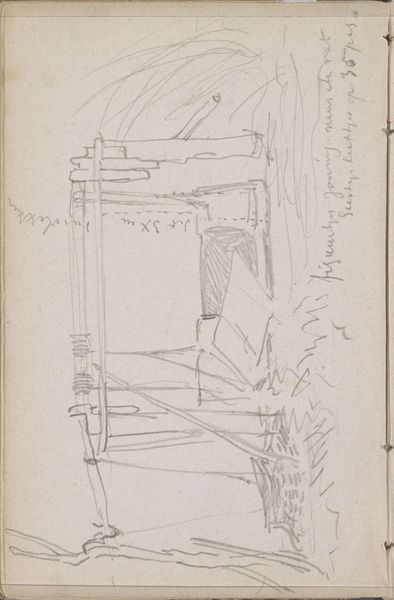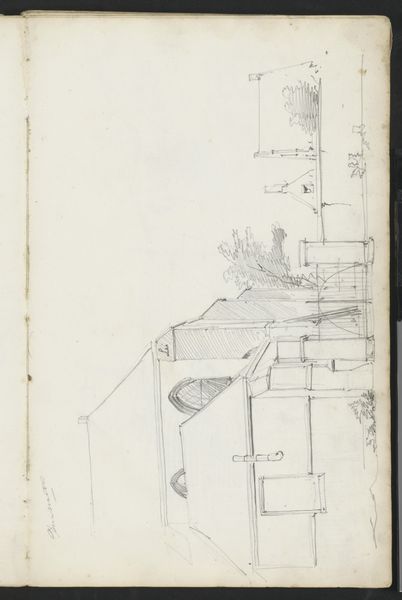
drawing, pencil
#
drawing
#
landscape
#
pencil
#
realism
Copyright: Rijks Museum: Open Domain
Curator: Looking at this drawing, titled "Man on a Moored Boat on a Quay," a pencil drawing realized sometime between 1834 and 1903, courtesy of the Rijksmuseum. There’s a sense of quiet industry that really resonates. What are your initial thoughts? Editor: There's an immediate feeling of lightness, almost fragile in its rendering. It's a very sparse, straightforward sketch – minimal lines defining the essential structure of a boat and the adjacent dock. There is a beautiful emptiness in this pencil landscape that emphasizes line and raw material. Curator: It definitely reflects Weissenbruch’s broader artistic focus; his interest in the social dynamics of labor, and of capturing scenes from ordinary working life, particularly among the laboring class who interact daily with the canals and docks. Editor: Absolutely. Thinking materially, the visible grain of the paper becomes an integral element, further softening the scene. I think that also helps speak to how Weissenbruch saw the materiality of daily labor; he's calling our attention to the conditions within which it all happens. Curator: It speaks to the broader narrative of Realism—how art began reflecting the mundane realities and class consciousness and anxieties of its time—this artistic gaze being applied to often marginalized people. Do you see how his work can contribute to how we see the role of labor today? Editor: Most definitely. Realism isn't merely a stylistic choice, but a commitment to truthfully portraying the world and power dynamics, reflecting the inherent value and struggles of laborers that is rarely reflected within cultural expressions. This simple scene acts as a document. It asks us to reconsider the aesthetics and the narratives. Curator: Indeed, considering the means of production involved, how the raw materials interact, and the scene itself becomes imbued with a socio-political charge. Well, a worthwhile perspective, I must say. Editor: And yours offers valuable context for understanding its social implications— a thought-provoking piece when considered both artistically and contextually.
Comments
No comments
Be the first to comment and join the conversation on the ultimate creative platform.
